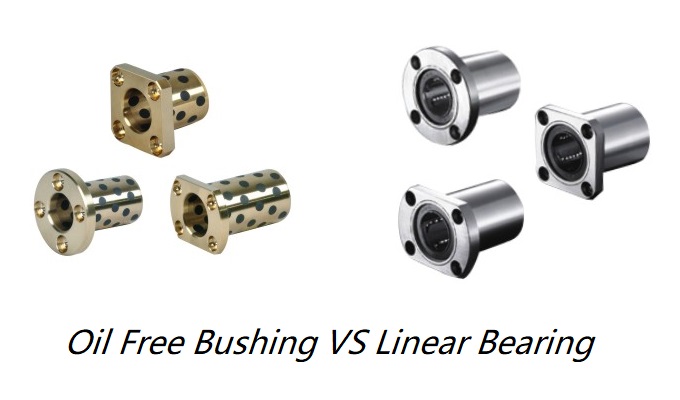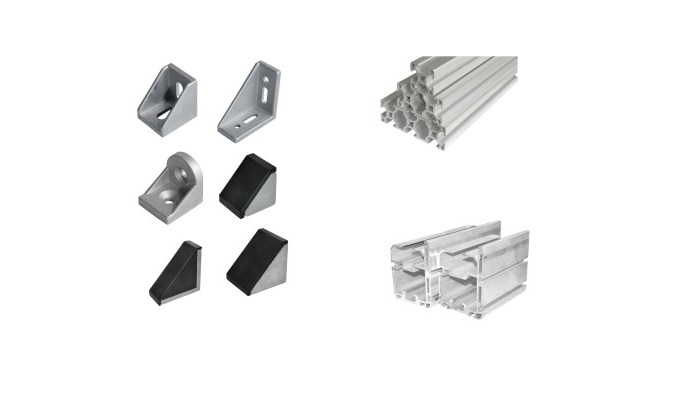What is A Quick Clamp?
Quick clamps, also known as rapid clamps offer precise positioning and rapid clamping, revolutionizing various industrial sectors. From welding and machining to tooling and inspection processes, quick clamps have become indispensable in manufacturing. They excel at securely holding workpieces during production, ensuring optimal stability and accuracy.
But their applications don't stop there. Quick clamps are equally valuable for securing specific components within equipment, providing a reliable grip that withstands even the most demanding conditions. Their clamping forces can range from as low as tens of Newtons to as high as thousands of Newtons, enabling users to select the appropriate clamp based on their specific needs.
With their speed and efficiency, quick clamps streamline manufacturing workflows, reducing setup time and increasing productivity. Their rapid and precise clamping action minimizes downtime and allows for seamless transitions between different workpieces or tasks. This makes them a favorite tool among professionals in industries such as automotive, aerospace, electronics, and more.
Not only do quick clamps enhance operational efficiency, but they also contribute to overall work safety. With their reliable clamping force, they prevent workpieces from shifting or coming loose during critical processes, minimizing the risk of accidents and ensuring consistent quality.

What Are the Different Types of Quick Acting Clamps?
There are several different types of quick-acting clamps available, each designed for specific applications and requirements. Here are some common types of quick-acting clamps:
Bar Clamps: Bar clamps, also known as sliding bar clamps or F-clamps, consist of a long bar with a sliding jaw that can be quickly adjusted and locked in position. They are versatile clamps used in woodworking, metalworking, and assembly tasks.
C-Clamps: C-clamps, also called G-clamps, have a fixed frame in the shape of the letter "C" with a screw mechanism that allows for quick adjustment and tightening. They are commonly used in woodworking, metalworking, and other general clamping applications.
Toggle Clamps: Toggle clamps utilize a lever-operated mechanism with a toggle linkage to provide quick and secure clamping. They are often used in applications where rapid clamping and release are required, such as holding workpieces in jigs and fixtures.
One-Handed Bar Clamps: One-handed bar clamps, as the name suggests, can be operated with a single hand. They typically feature a quick-release trigger or lever that allows for rapid clamping and easy one-handed adjustment.
Spring Clamps: Spring clamps, also known as pinch clamps or hand clamps, are lightweight clamps with a spring-loaded mechanism that provides quick and easy clamping. They are commonly used for holding small objects, securing lightweight materials, or temporarily fastening during gluing or painting tasks.
Quick-Release Vises: Quick-release vises are heavy-duty clamping devices commonly used in metalworking and woodworking. They feature a quick-release mechanism that allows for rapid opening and closing of the jaws, facilitating fast workpiece adjustments and positioning.
Pneumatic/ Hydraulic Clamps: Pneumatic or hydraulic quick-acting clamps utilize compressed air or hydraulic pressure to provide fast and powerful clamping. They are often used in industrial applications where high clamping forces are required.
How To Select the Right Quick Clamp in Your Project?
Clamping Force and Arm Distance:
Evaluate the clamping force and arm distance of the quick clamps to ensure they meet the specific requirements of your workpieces. Consider the required gripping strength and the available space for installation. This will help determine if the clamps can securely hold the workpieces and fit within the designated installation area.
Installation Method or Type:
Identify the most suitable installation method or type of quick clamps for your application. This can include vertical clamping, horizontal clamping, or push-pull clamping, depending on your specific needs. Assess the compatibility of the chosen installation method with your workpiece and production setup.
Compatibility with Workpiece Specifications:
Take into account the dimensions, shape, and materials of the workpieces that will be clamped. Ensure that the chosen quick clamps are compatible with the size and characteristics of your workpieces. Consider factors such as weight capacity, gripping surface area, and adaptability to different workpiece geometries.
Ease of Use and Adjustability:
Consider the ease of operation and adjustability of the quick clamps. Look for features such as quick-release mechanisms, ergonomic handle designs, and the ability to make precise adjustments. These features contribute to improved efficiency, operator comfort, and the ability to accommodate varying workpiece sizes and shapes.
Durability and Reliability:
Select quick clamps from reputable manufacturers known for producing high-quality products. Assess the materials used, construction quality, and the track record of the manufacturer in terms of product reliability and longevity. Durable and reliable quick clamps will contribute to a smoother production process and minimize downtime.
The Features of Quick Clamp
Simplicity and Versatility:
Quick clamps boast a simple and user-friendly design, allowing for easy assembly and disassembly. Their broad range of compatible components ensures adaptability to diverse workpieces, making them a go-to choice for different manufacturing processes.
Swift Workpiece Handling:
With quick clamps, the swift loading and unloading of workpieces become a breeze. These clamps offer efficient and hassle-free operation, enabling operators to quickly secure and release workpieces, saving valuable time in production workflows.
Mature Design and Longevity:
Quick clamps benefit from a mature and well-established design, ensuring their longevity and durability. Built with high-quality materials and precision engineering, they exhibit robust strength and stability, enduring the rigors of industrial environments and providing reliable performance over an extended lifespan.
Passive Locking Mechanism:
Utilizing the principle of a four-bar mechanism, quick clamps operate on a dead point principle. Once locked, they assume a passive force state, eliminating any active force exertion on the clamped object. This feature enhances safety and prevents unintended movement or damage to the workpiece.
By incorporating quick clamps into your industrial processes, you can streamline operations, reduce setup times, and enhance overall productivity. These versatile tools excel in various applications, including assembly, welding, machining, and more.
Applications in Quick Clamp
Automotive Industry:
In the fast-paced automotive sector, quick clamps play a vital role in assembly lines, welding operations, and component positioning. From securing body panels to holding intricate parts during machining processes, quick clamps ensure efficient production and maintain high quality standards.
Electronics, Furniture, and Refrigeration Equipment Manufacturing:
The electronics industry, along with furniture and refrigeration equipment manufacturing, relies on quick clamps for precise component assembly, fixture positioning, and soldering processes. These clamps provide stability and accuracy, facilitating seamless production and ensuring the integrity of electronic circuits and other delicate components.
Machinery Manufacturing and Processing:
Quick clamps play a crucial role in the machinery manufacturing and processing sectors. They enable secure clamping during machining operations, such as milling, drilling, and turning, ensuring precise and consistent results. Quick clamps are also essential in component assembly, providing stability and alignment during the production of complex machinery.
Assembly and Welding in General Manufacturing:
In general manufacturing processes, quick clamps simplify the assembly of various products. Whether it's joining components, aligning parts, or securing workpieces for welding, these clamps provide the necessary grip and stability, streamlining production and improving overall efficiency.
Automation Equipment and Logistics:
Quick clamps find application in automation equipment and logistics, where they facilitate quick and reliable clamping for robotic arms, conveyors, and other automated systems. They ensure precise positioning and secure gripping, enabling efficient material handling and streamlined logistical operations.
The applications of quick clamps extend far beyond these examples, as their versatility allows them to adapt to numerous industrial settings. From woodworking to metal fabrication, from construction to packaging, quick clamps prove indispensable in enhancing productivity and maintaining precision.

![]()
![]()
Installation of quick clamp
Simple Fixation, Reliable Stability
The installation of the quick clamp is usually accomplished by securely fastening it to a base using screws. This installation method is simple yet effective, ensuring the stability and reliability of the clamp.




Maintenance
Depending on the Usage Environment
Depending on the usage environment, the maintenance requirements for the clamp may vary. In a favorable environment or with infrequent use, no specific maintenance is required. However, in harsher environments or with frequent use, it is recommended to apply a small amount of lubricating oil to the rivet points of the clamp to ensure smooth operation and prolong its lifespan.
Common Issues of Quick Clamp
When selecting a clamp, pay attention to the maximum clamping force parameter to avoid exceeding its limits, which may result in loosening or damage to the clamp. Ensure you choose an appropriate clamp that meets your clamping needs while ensuring stability and safety.
When using a regular clamp in an environment with strong mechanical vibrations, the shaking of the handle due to the vibrations may cause the clamp to loosen. Therefore, it is advisable to select a clamp with a self-locking feature to ensure reliable clamping in such vibration-prone environments.
The perception of tightness may vary when flipping the clamp. During the assembly process, when the clamp needs to be flipped between different structural positions, slight variations in the perceived tightness may occur. This is normal and does not adversely affect the clamping performance.
By understanding these aspects related to installation, maintenance, and common issues, you can ensure the proper usage and maximize the effectiveness of the quick clamp in industrial applications. We are committed to providing stable and reliable clamping solutions to meet your production need.
Conclusion
Quick clamps are essential tools that play a crucial role in industrial production. By using clamps correctly, maintaining them regularly, and following safety precautions, you can ensure the efficient operation of clamps and the safety of operators. We hope that this comprehensive clamp guide provided in this article will be helpful to you, enabling you to better utilize clamps in your work.






